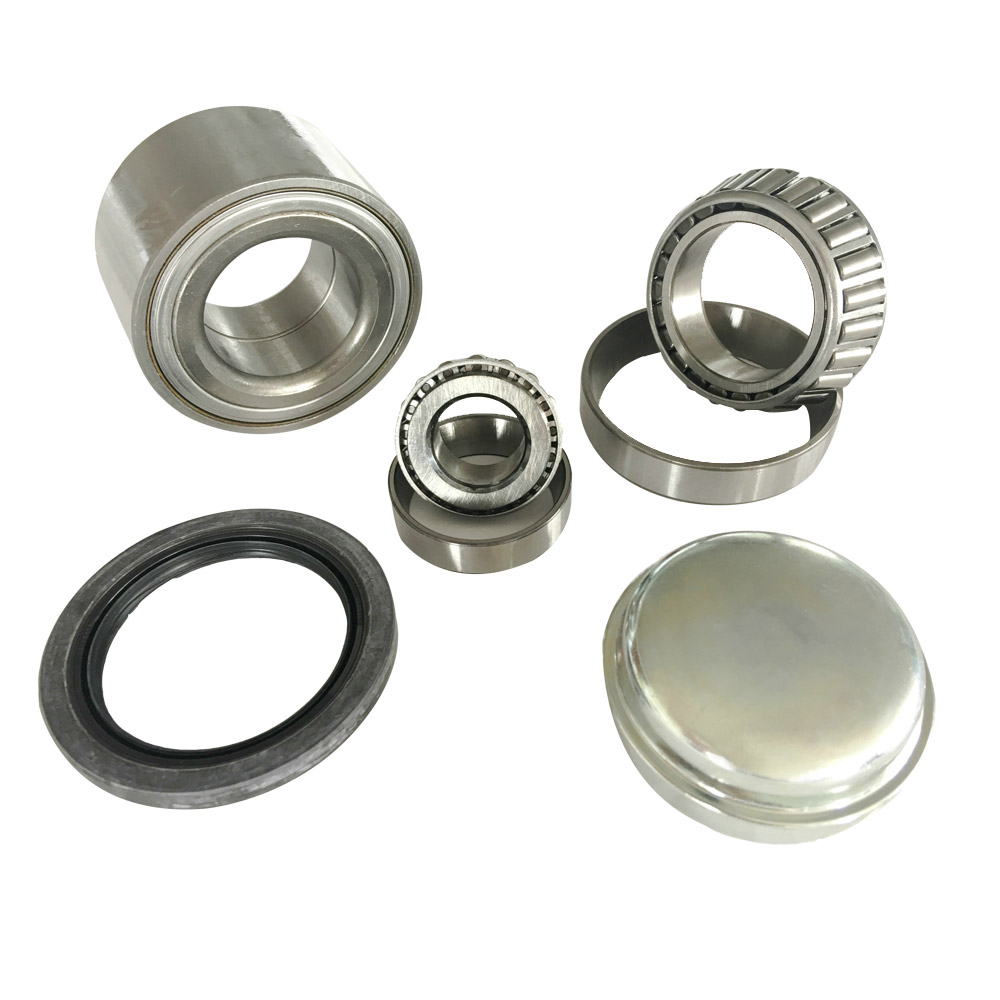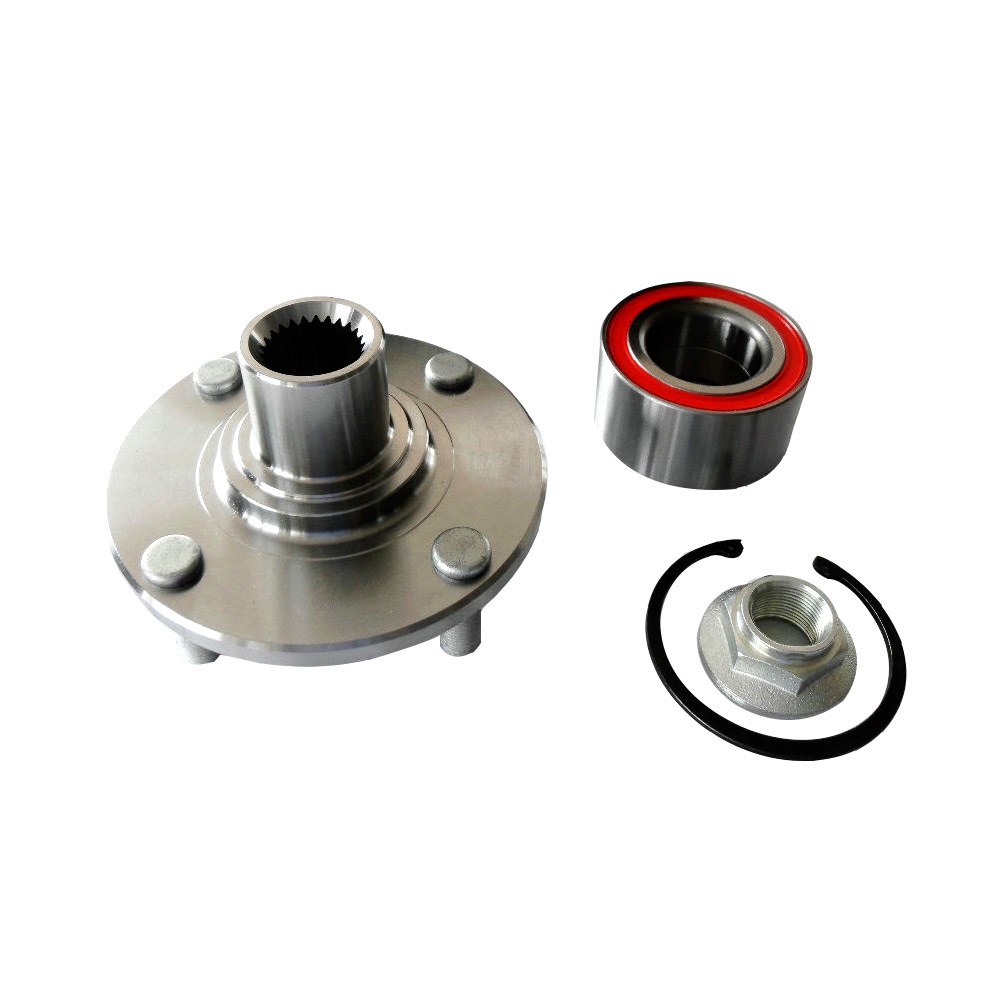Introduction
The wheel hub bearing is a critical component in modern vehicles, playing a pivotal role in ensuring smooth wheel rotation and vehicle stability. It not only supports the weight of the vehicle but also reduces friction between the wheel and axle, allowing for efficient motion.
Whether you drive a passenger car, truck, or heavy-duty vehicle, understanding the function and maintenance of wheel hub bearings can help you avoid costly repairs and improve safety.
What Is a Wheel Hub Bearing?
A wheel hub bearing is a type of rolling element bearing that sits inside the wheel hub assembly, connecting the wheel to the vehicle’s axle. Its primary role is to enable the wheel to rotate freely with minimal friction while supporting radial and axial loads caused by acceleration, braking, and cornering.
Most modern vehicles use integrated hub bearings, combining the hub and bearing in a single assembly, enhancing durability and ease of installation.
What Are the Main Types of Wheel Hub Bearings?
Ball Bearings
Contain spherical rolling elements and are ideal for lighter vehicles, providing smooth rotation and moderate load capacity.
Tapered Roller Bearings
Use conical rollers, capable of handling higher radial and axial loads, suitable for heavy-duty vehicles.
Integrated Hub Bearings
Pre-assembled hub and bearing units designed for direct installation, common in modern cars for improved precision and maintenance.

What Are the Key Functions of Wheel Hub Bearings?
Support Vehicle Weight: Carry the load of the vehicle while allowing rotation.
Reduce Friction: Enable smooth wheel turning with minimal resistance.
Maintain Wheel Alignment: Keep the wheel properly aligned to the axle.
Provide Mounting for Brake Components: Many hub assemblies include mounting points for brake rotors or drums.
Enhance Safety: Reliable bearings prevent wobbling, uneven tire wear, and loss of control.
What Are Common Symptoms of Wheel Hub Bearing Failure?
Noise: Grinding, humming, or rumbling sounds from the wheel area.
Vibration: Excessive vibration or wobble felt through the steering wheel.
Uneven Tire Wear: Caused by misalignment due to worn bearings.
ABS Warning Light: Integrated hub bearings often include ABS sensors; failure can trigger warnings.
Wheel Play: Excessive looseness when moving the wheel back and forth.
How to Maintain and Extend the Life of Wheel Hub Bearings?
Regular Inspections: Check for noise and play during routine vehicle maintenance.
Proper Lubrication: Bearings need grease to minimize friction; sealed units are pre-lubricated and maintenance-free.
Avoid Water Ingress: Ensure seals are intact to prevent contamination by water and dirt.
Avoid Overloading: Do not exceed vehicle load limits, which stress bearings.
Timely Replacement: Replace bearings at signs of wear before catastrophic failure.
What Materials Are Wheel Hub Bearings Made Of?
Bearing Rings and Rolling Elements: Usually made of high-grade chrome steel for wear resistance and strength.
Seals: Rubber or synthetic materials designed to keep lubricant in and contaminants out.
Hub Assemblies: Often forged steel or aluminum alloy for strength and weight savings.
Why Are Wheel Hub Bearings Crucial for Vehicle Safety?
Failing wheel hub bearings can lead to:
Loss of steering control
Brake system malfunction
Tire damage and blowouts
Increased stopping distances
Maintaining good condition of hub bearings ensures safe handling and longevity of your vehicle.
How Are Wheel Hub Bearings Replaced?
Replacement generally involves:
Lifting and Securing the Vehicle
Removing the Wheel and Brake Components
Extracting the Old Hub Bearing Assembly
Installing the New Hub Bearing
Reassembling Brake and Wheel Parts
Performing Wheel Alignment
Due to the precision required, it’s often recommended to have replacements done by professionals.
Frequently Asked Questions (FAQs)
How long do wheel hub bearings last?
Typically 85,000 to 100,000 miles (136,000 to 160,000 km), but depends on driving conditions.
Can I drive with a bad wheel hub bearing?
It is unsafe and can cause further damage; immediate repair is recommended.
How much does it cost to replace wheel hub bearings?
Costs vary by vehicle and bearing type but generally range from $150 to $500 per wheel including labor.
Are wheel hub bearings different from wheel bearings?
They refer to the same component; "hub bearing" often refers to integrated units.
Can I lubricate my wheel hub bearings myself?
Sealed units do not require lubrication; older types may need periodic greasing.
Conclusion
The wheel hub bearing, though often overlooked, is a vital component that ensures your vehicle’s wheels rotate smoothly, safely, and reliably. Regular inspection and timely maintenance can prevent expensive repairs and safety hazards.






